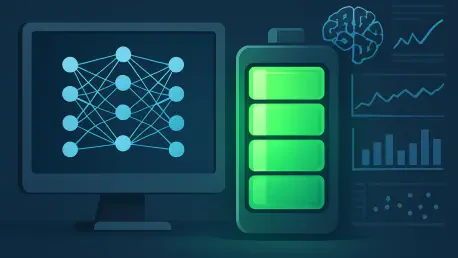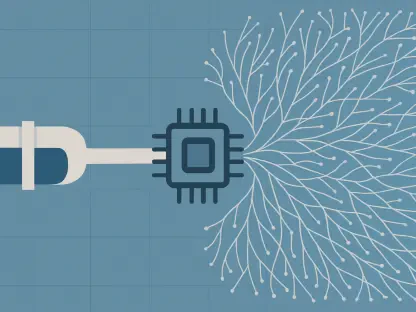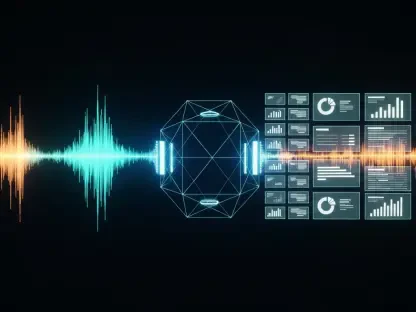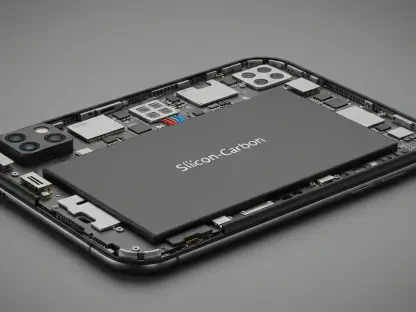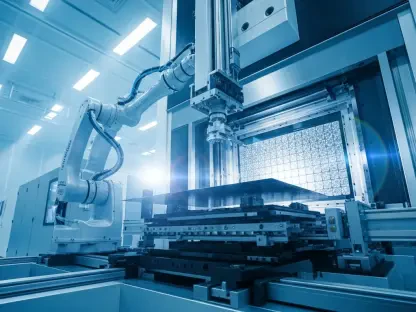In an era where lithium-ion batteries power everything from smartphones to electric vehicles (EVs) and vast energy grids, the challenge of accurately assessing their performance has never been more critical, as these powerhouses drive modern technology. Determining key metrics like state of charge (SOC), state of health (SOH), and remaining useful life (RUL) remains a daunting task due to the intricate and dynamic nature of battery degradation. Traditional approaches often miss the mark, leaving gaps in safety and efficiency. However, a groundbreaking study published this year in Communications Engineering by Wu, Sun, Li, and colleagues introduces a deep learning framework that redefines battery analysis. This innovative tool not only sharpens the precision of state predictions but also categorizes batteries based on shared behaviors, promising a seismic shift in battery management systems (BMS). The implications stretch far beyond mere data, hinting at a future where EV range predictions are flawless and aging batteries find new purpose in sustainable energy systems.
This advancement tackles the messy, nonlinear patterns of battery wear that older models struggle to interpret. By harnessing vast amounts of operational data—think voltage, current, and temperature readings—the deep learning model uncovers hidden trends with remarkable accuracy. Its dual capability of estimation and clustering offers practical solutions for industries reliant on reliable energy storage. From enhancing vehicle performance to supporting grid-scale sustainability, the real-world impact of this technology is poised to reshape how battery lifecycles are managed. What makes this approach stand out is not just its technical prowess but its adaptability across diverse scenarios, ensuring it’s not confined to a lab but ready for the road ahead.
Overcoming the Shortcomings of Conventional Techniques
Unpacking the Flaws of Traditional Models
Traditional methods for analyzing lithium-ion batteries often rely on physical models or simplistic statistical tools, which fall short when faced with the complex, nonlinear degradation that occurs over countless charge-discharge cycles. These approaches typically depend on predefined equations or limited datasets, failing to account for the unpredictable electrochemical reactions within a battery. As a result, predictions of SOC, SOH, and RUL are frequently inaccurate, leading to inefficiencies in performance and potential safety risks. For instance, a misjudged state of charge can leave EV drivers stranded, while an incorrect health assessment might overlook critical wear, risking sudden failure. This persistent unreliability has long hindered optimal battery management, underscoring the urgent need for a more robust solution that can adapt to the intricate realities of battery behavior in varied conditions.
Moreover, conventional techniques often require extensive manual calibration and parameter tuning, a process that is not only time-consuming but also prone to human error. These models struggle to generalize across different battery types or operating environments, meaning a method effective for one chemistry might fail with another. This lack of flexibility limits their utility in diverse applications, from portable electronics to grid storage systems. Additionally, traditional tools rarely provide insights beyond basic metrics, missing opportunities to identify specific degradation causes or patterns. Such shortcomings reveal a critical gap in battery analysis, one that demands a shift toward data-driven methodologies capable of handling the multifaceted challenges of modern energy storage demands with greater precision and insight.
Setting the Stage for Innovation
The limitations of older analysis methods have paved the way for advanced technologies to step in, with deep learning emerging as a transformative force in battery diagnostics. Unlike rigid physical models, this approach thrives on its ability to learn from vast, complex datasets without the need for constant recalibration. By processing raw operational inputs, it captures subtleties that traditional tools overlook, offering a dynamic perspective on battery health and performance. This shift is particularly vital in high-stakes industries like electric mobility, where even minor miscalculations can have significant consequences. The introduction of AI-driven frameworks marks a departure from static, outdated systems, promising a level of accuracy and adaptability that aligns with the growing complexity of energy storage needs.
Furthermore, the move away from conventional constraints allows for a broader understanding of battery behavior across different contexts and lifecycles. Deep learning doesn’t just react to predefined scenarios; it evolves with the data it processes, ensuring relevance even as battery technologies advance. This adaptability is crucial for applications ranging from consumer gadgets to large-scale renewable energy systems, where varied usage patterns and environmental factors play a role. By addressing the core weaknesses of past methods—such as their inability to handle nonlinearity or provide actionable insights—this new wave of technology sets a foundation for smarter, more reliable battery management. It’s a stepping stone toward a future where energy storage isn’t just maintained but optimized at every turn.
Harnessing Deep Learning for Precision and Insight
Decoding Battery Behavior with Neural Networks
Deep learning stands out as a revolutionary tool in lithium-ion battery analysis, particularly in its capacity to unravel the complex, time-dependent patterns of degradation that older methods miss. Leveraging sophisticated neural network architectures—potentially recurrent neural networks (RNNs) or transformer models—this technology processes massive datasets of operational metrics like voltage, current, and temperature. It identifies subtle trends and long-term dependencies across thousands of cycles, delivering highly accurate estimates of SOC, SOH, and RUL. Compared to traditional benchmarks, this approach significantly reduces error rates, ensuring that predictions are not just theoretical but grounded in real battery dynamics. Such precision is invaluable for maintaining performance and preventing unexpected failures in critical applications.
The strength of deep learning lies in its ability to adapt and learn without the constraints of predefined equations or manual adjustments. Unlike physical models that falter with nonlinear behaviors, these algorithms excel at interpreting raw data directly, translating it into actionable insights. This means that whether a battery is powering a smartphone or an EV, the framework can pinpoint its current state with remarkable fidelity. For industries reliant on consistent energy output, this translates to fewer disruptions and enhanced operational planning. Moreover, the continuous learning aspect of these models ensures they remain relevant as new data emerges, offering a forward-looking solution that keeps pace with evolving battery technologies and usage demands.
Ensuring Reliability Across Diverse Applications
The robustness of this deep learning framework is further evidenced by its performance across a wide array of battery types, environmental conditions, and aging scenarios. By training on a comprehensive dataset that spans various chemistries and cycling protocols, the model avoids the pitfall of overfitting to narrow use cases. Instead, it generalizes effectively, delivering reliable predictions whether applied to compact consumer electronics or large-scale grid storage systems. This versatility is critical in a landscape where batteries face diverse stressors, from extreme temperatures to irregular charge patterns. The reported lower error margins highlight its superiority over conventional tools, making it a dependable choice for real-world deployment.
Beyond technical accuracy, the framework’s adaptability addresses practical challenges faced by industries adopting lithium-ion technology at scale. For electric vehicle manufacturers, it means more accurate range predictions that alleviate driver concerns, while for energy grid operators, it ensures stable performance under fluctuating loads. This broad applicability isn’t just a feature—it’s a necessity as the demand for energy storage grows across sectors. The ability to maintain precision in varied contexts also supports innovation in battery design, allowing engineers to test and refine chemistries with confidence in the underlying analytics. Ultimately, this deep learning approach bridges the gap between theoretical potential and operational success, setting a new standard for battery state estimation.
Categorizing Batteries for Strategic Management
A standout feature of the deep learning framework is its clustering capability, which groups lithium-ion batteries based on shared electrochemical characteristics and degradation patterns. This goes beyond mere estimation, offering a deeper understanding of why and how batteries age differently. For example, it can distinguish between capacity fade caused by electrolyte decomposition and that resulting from cathode material wear. Such insights enable targeted maintenance strategies, allowing manufacturers and operators to address specific failure modes before they escalate. In fleet management scenarios, particularly for EVs, this categorization ensures that batteries with similar wear profiles are managed cohesively, enhancing overall safety and efficiency.
Clustering also transforms how industries approach battery diagnostics by providing a granular view of performance trends. Instead of treating all batteries as uniform, operators can tailor interventions—whether it’s adjusting charging protocols or scheduling replacements—based on distinct group behaviors. This precision reduces downtime and extends battery life, a crucial factor for cost-sensitive sectors like logistics or ride-sharing. Furthermore, the ability to identify degradation causes offers valuable feedback for material scientists working on next-generation chemistries. By highlighting weak points in current designs, clustering fosters innovation at the material level, paving the way for more durable and efficient energy storage solutions in the long term.
Advancing Sustainability Through Repurposing
The clustering mechanism plays a pivotal role in promoting sustainability by facilitating second-life applications for lithium-ion batteries. By identifying groups with comparable remaining lifespans, the framework simplifies the process of repurposing batteries no longer suitable for high-demand uses like EVs into less intensive roles such as grid storage. This extends the utility of each unit, aligning with circular economy principles that prioritize resource efficiency and waste reduction. As global efforts intensify to transition to clean energy, such strategies are essential for maximizing the value derived from every battery produced, thereby lessening the environmental footprint of energy storage.
This focus on repurposing also has economic benefits, as it reduces the need for new battery production and mitigates disposal challenges. For energy providers, integrating second-life batteries into grid systems offers a cost-effective way to store renewable energy, balancing supply and demand without heavy investment in fresh units. Meanwhile, the clustering data ensures that only batteries with compatible profiles are paired for such applications, maintaining system reliability. This synergy between technological innovation and environmental stewardship underscores the broader potential of deep learning to support sustainable practices, ensuring that advancements in battery management contribute meaningfully to global electrification goals.
Making Technology Accessible and Impactful
Fostering Trust Through Clear Insights
One of the critical barriers to adopting AI in industrial settings is the perceived opacity of complex models, often described as “black boxes.” This deep learning framework counters that concern by emphasizing interpretability, offering clear visualizations and feature mappings that link algorithmic outputs to tangible battery characteristics. Engineers and technicians can see how specific degradation patterns correlate with physical traits, making it easier to trust and act on the insights provided. This transparency is especially vital in safety-critical applications like EVs, where understanding the rationale behind a prediction can mean the difference between preventative maintenance and a hazardous oversight. By demystifying AI, the framework builds confidence among stakeholders who prioritize clarity in decision-making.
Beyond building trust, interpretability enhances the practical utility of the technology for diverse users. For battery manufacturers, it means being able to trace performance issues back to specific design or material choices, informing future improvements. For fleet operators, it provides a straightforward way to communicate battery health to non-technical staff or customers, streamlining operations. This focus on accessible insights ensures that the benefits of deep learning aren’t limited to data scientists but extend to those on the front lines of battery management. As a result, the framework serves as a collaborative tool, bridging the gap between advanced analytics and everyday engineering needs with a clarity that drives informed action.
Delivering Efficiency on Any Platform
Scalability is another cornerstone of this deep learning solution, designed to operate efficiently even on resource-constrained hardware such as in-vehicle BMS or portable devices. Optimized algorithms and streamlined training pipelines ensure that real-time inference doesn’t compromise accuracy, making the technology viable for widespread deployment. As the volume of battery data continues to grow with the proliferation of IoT-enabled systems, this computational efficiency becomes increasingly important. It allows industries to integrate sophisticated analysis into existing infrastructure without requiring costly upgrades, lowering the barrier to adoption across sectors ranging from automotive to renewable energy.
This focus on scalability also anticipates future demands, ensuring the framework can handle expanding datasets and evolving use cases. Whether it’s monitoring a single EV battery or an entire grid storage array, the model adapts seamlessly, maintaining performance without excessive power draw or latency. For smaller enterprises or emerging markets, this means access to cutting-edge battery management without prohibitive costs. The practical design reflects a commitment to real-world impact, ensuring that the benefits of deep learning are not confined to high-budget operations but can enhance energy storage solutions globally, supporting a more connected and efficient energy landscape.
Driving Change Across Sectors and Beyond
Enhancing Electric Vehicle Performance
The implications of deep learning for the electric vehicle industry are profound, directly addressing pain points that affect both manufacturers and drivers. Accurate SOC estimation translates to precise range predictions, alleviating the common concern of “range anxiety” by providing reliable information on how far a vehicle can travel. Meanwhile, real-time SOH and RUL assessments enable timely maintenance alerts, preventing unexpected breakdowns and extending battery longevity. For fleet operators in logistics or ride-sharing, the clustering feature offers a way to monitor and manage entire sets of vehicles, ensuring uniform performance and reducing operational disruptions through strategic battery replacements or adjustments.
Additionally, the technology supports EV adoption by improving cost-efficiency and safety, key factors in consumer confidence. Manufacturers can use clustering insights to refine battery designs, targeting specific degradation issues that impact performance over time. This iterative feedback loop drives innovation, potentially leading to longer-lasting, more reliable batteries that lower ownership costs. For policymakers and urban planners, the enhanced reliability of EVs powered by such systems encourages broader electrification initiatives, reducing emissions in transportation. The ripple effect of these advancements positions deep learning as a catalyst for transforming how electric mobility integrates into daily life, supporting a cleaner, more efficient future.
Pioneering a Greener Energy Ecosystem
On a larger scale, this deep learning framework contributes significantly to the global push for sustainable energy systems, aligning with goals of electrification and renewable power integration. By optimizing second-life battery applications through clustering, it reduces waste and maximizes resource use, supporting circular economy models critical for environmental stewardship. Integration with IoT-enabled smart grids further amplifies its impact, as precise battery performance predictions enhance energy distribution and storage, balancing loads from intermittent sources like solar or wind. This reliability is essential for scaling renewable energy adoption, ensuring grids remain stable under varying conditions.
Moreover, the technology’s role in sustainability extends to policy and industry collaboration, offering data-driven insights that can shape regulations or investment in clean energy infrastructure. Battery manufacturers gain tools to design products with longer lifecycles, while energy providers can plan storage solutions with greater confidence in performance outcomes. As the world grapples with climate challenges, such innovations provide a tangible path to reducing the carbon footprint of energy storage. Looking ahead, the framework’s adaptability suggests potential for even broader applications, from hybrid energy models to adaptive learning systems, ensuring that battery management evolves alongside the urgent need for greener, smarter energy ecosystems.
